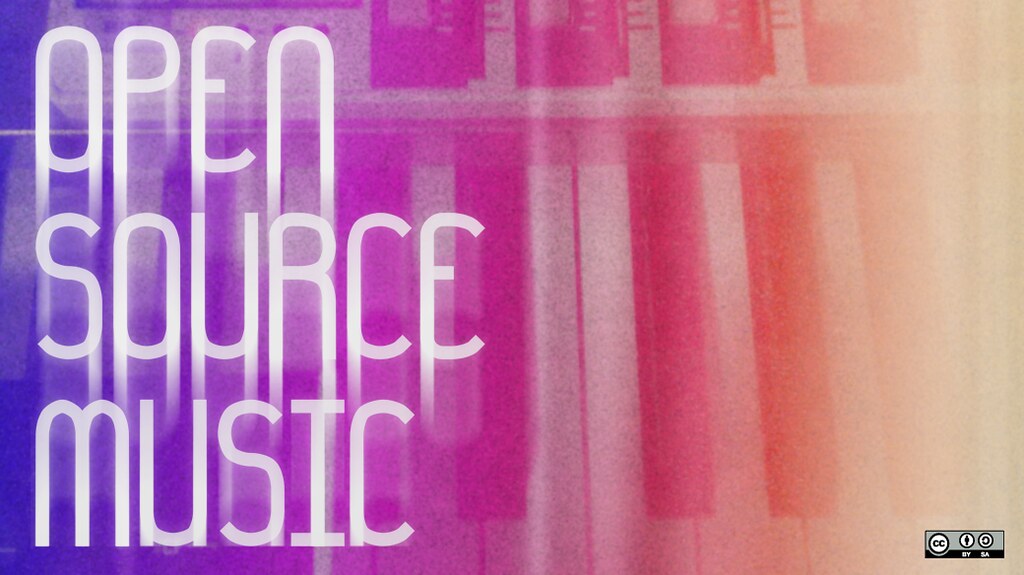Are you looking to improve your music production skills or break into the industry? Understanding music production words is crucial to achieving success in this field. In this comprehensive guide, we’ve compiled a glossary of music production words to help you navigate the technical language used in the industry. From software and hardware terminology to recording techniques, mixing and mastering, music genres, and production techniques, this guide has everything you need to know to take your music production skills to the next level. Whether you’re a beginner or a seasoned professional, this guide will provide you with a solid foundation to achieve success in music production.

Table of Contents
Music Production Words Glossary
To help you better understand the language of music production, we have compiled a comprehensive list of music production words with definitions, organized by category:
Tempo and Rhythm
- Beat – A unit of musical time, consisting of a primary accent and one or more secondary accents. It provides the foundation for the rhythm of a song.
- Tempo – The speed or pace of a musical piece, measured in beats per minute (BPM). It is the rate at which the song is played.
- Time signature – A numerical notation that indicates the number of beats in each bar and the type of note that receives one beat. It defines the rhythm of a song.
Harmony
- Chord – A group of three or more notes played together to create a harmony. It is the basic building block of harmony.
- Scale – A sequence of notes played in ascending or descending order, often used as the basis of a melody or harmony. It creates the tonality of a song.
- Key – The tonal center of a musical piece, determined by the notes used in the melody and harmony. It defines the chords and notes used in a song.
Melody
- Melody – The main musical line of a piece, often consisting of a sequence of notes played one after the other. It is the most memorable part of a song.
- Interval – The distance between two notes in a melody or harmony. It determines the mood of a song.
- Phrase – A musical idea consisting of a sequence of notes that form a coherent musical thought. It is a recognizable and memorable part of a song.
Arrangement and Composition
- Arrangement – The process of organizing and structuring the various elements of a musical piece, such as the melody, harmony, rhythm, and instrumentation. It determines the overall structure of a song.
- Composition – The process of creating a new piece of music from scratch, often involving the development of a melody, harmony, rhythm, and lyrics. It is the creation of a song from an idea.
Sound Design
- Sound design – The process of creating and manipulating sounds to achieve a desired effect in a musical piece. It creates the mood and atmosphere of a song.
- Synthesizer – An electronic musical instrument that generates sound using oscillators, filters, and other electronic components. It is used to create unique sounds and textures in a song.
- Sampling – The process of recording and reusing sounds from other sources, often used in electronic music production. It is used to add existing sounds to a song.
Performance
- Performance – The act of playing or singing a musical piece in front of an audience. It is the execution of a song.
- Improvisation – The process of creating music spontaneously, often in response to a specific musical context or environment. It is the creation of a song in real-time.
- Orchestration – The process of arranging and assigning specific parts to different instruments in an ensemble. It is the distribution of the various parts of a song to different instruments.

Music Production Software Terminology
If you’re new to music production, understanding the key terms and jargon related to music production software can be overwhelming. Here are some essential terms to get you started:
Digital Audio Workstation (DAW)
A DAW is the central hub of music production software. It’s a software program used for recording, editing, and mixing audio. DAWs often include features such as virtual instruments, MIDI sequencing, and audio effects. Some popular DAWs include Ableton Live, Logic Pro, FL Studio, and Pro Tools.
Plugins
Plugins are software add-ons that extend the functionality of a DAW. They are often used to add new virtual instruments, audio effects, and other features. Plugins can be purchased or downloaded for free from various developers and are available in different formats such as VST, AU, and AAX.
Virtual Instruments
Virtual instruments are software simulations of real-world musical instruments. They are often used in electronic music production but can also be used in other genres. Virtual instruments can be used to create realistic sounds of various instruments, including pianos, strings, drums, and synthesizers. Some popular virtual instrument plugins include Native Instruments Komplete, Spectrasonics Omnisphere, and Arturia V Collection.

Music Production Hardware Terminology
Understanding key terms and jargon related to music production hardware is essential for producing high-quality music. Here are a few examples:
Audio Interface
An audio interface is a hardware device used to connect a computer to other audio devices, such as microphones, instruments, and speakers. It allows for high-quality recording and playback of audio signals and is an essential component of any home or professional recording studio.
There are different types of audio interfaces, including USB, Thunderbolt, and FireWire. USB interfaces are the most common and affordable, while Thunderbolt and FireWire interfaces offer faster data transfer speeds for more demanding recording applications.
Studio Monitors
Studio monitors are specialized speakers designed for use in music production environments. They are designed to produce a flat frequency response, which means they accurately reproduce sound without adding any coloration or distortion.
It is essential to use studio monitors when mixing and mastering a track, as they allow producers to hear the nuances and details in the audio accurately. Some popular brands of studio monitors include KRK, Yamaha, and Genelec.
Microphone Types
Different types of microphones are used for recording sound, and each has its unique characteristics and applications. Some popular microphone types used in music production include:
-
Condenser microphones – These microphones are sensitive and can capture detailed, high-quality sound. They are often used for recording vocals, acoustic instruments, and drum overheads.
-
Dynamic microphones – These microphones are less sensitive than condenser microphones and are often used for recording loud sound sources, such as electric guitar amps and drums.
-
Ribbon microphones – These microphones are known for their warm and natural sound. They are often used for recording brass instruments, strings, and guitar amps.
It is essential to choose the right microphone for the sound source to achieve the best possible recording quality.

Recording Techniques and Terminology
Recording music can be a daunting task, but having knowledge of various recording techniques and terminology can help. Here are a few examples:
Overdubbing
Overdubbing is the process of recording additional tracks over an existing recording, often used to add new parts to a musical piece. Overdubbing allows producers to build up a song, layer by layer, and add depth to a mix.
Punch in/out
Punch in/out is the process of recording a specific section of a musical piece, often used to fix mistakes or add new parts. With punch in/out recording, producers can focus on specific sections of a mix and make adjustments without having to re-record the entire song.
Double tracking
Double tracking is the process of recording a part twice and panning each track to create a wider stereo image. Double tracking can add a sense of depth and width to a mix, making it sound fuller and more dynamic.
In addition to these techniques, it’s important to understand key terms and jargon related to recording, such as:
Mic placement
Mic placement is the process of positioning a microphone in a specific location to achieve a desired sound. The placement of a microphone can greatly affect the tone and character of a recording, and it’s important to experiment with different mic positions to find the best sound for a particular instrument or voice.
Gain staging
Gain staging is the process of setting the levels of various audio signals to achieve a balanced and clear mix. Proper gain staging ensures that each instrument and voice is heard clearly in a mix, without any clipping or distortion.
Room acoustics
Room acoustics is the way that sound behaves in a specific room or environment, often affecting the way that recordings sound. Understanding the acoustics of a room can help producers to make informed decisions about mic placement, EQ, and other processing techniques to achieve the best possible sound.

Mixing and Mastering Terminology
Mixing and mastering are two critical processes in music production that require a deep understanding of key terms and jargon. Here are a few examples of essential music production words:
EQ (Equalization)
EQ or equalization is the process of adjusting the balance of frequencies in a mix to achieve a desired sound. EQ can be used to boost or reduce specific frequency ranges, such as bass, midrange, or treble, to create a well-balanced mix.
Compression
Compression is the process of reducing the dynamic range of a mix or individual audio tracks. It is often used to control volume levels and add sustain to instruments. Compression can also be used to glue individual tracks together, creating a more cohesive and polished mix.
Reverb
Reverb is a type of audio effect that adds a sense of space and depth to a mix. It creates the impression that the audio is being heard in a specific environment, such as a concert hall, cathedral, or recording studio. Reverb can be used to create a sense of ambience and to make individual tracks sound more natural.
It’s crucial to understand these terms and techniques, but it’s also essential to learn best practices for mixing and mastering to achieve a professional sound. One best practice is to use reference tracks to compare your mix with other professional mixes and ensure that your mix sounds balanced across different playback systems. Another best practice is to use tools such as spectrum analyzers and level meters to monitor your mix and ensure that it is well-balanced and meets industry standards.

Music Genres and Production Techniques
Understanding the unique terminology and production techniques used in different music genres is essential for producing high-quality music. Here are some popular music genres and their corresponding production techniques:
Hip-Hop
Hip-Hop is a genre characterized by its heavy use of sampling, drum machines, and electronic instruments. To produce a professional-sounding hip-hop track, producers must have a strong understanding of techniques such as scratching, beatboxing, and rapping. They must also be familiar with the unique terminology used in the genre, such as “chops,” “breaks,” and “loops.”
Electronic Dance Music (EDM)
EDM, short for “electronic dance music,” is a genre characterized by its heavy use of synthesizers, drum machines, and digital effects. To produce a professional-sounding EDM track, producers must have a strong understanding of techniques such as sidechaining and automation. They must also be familiar with the unique terminology used in the genre, such as “drops,” “buildups,” and “wobbles.”
Rock
Rock is a genre characterized by the use of electric guitars, bass guitars, and drums. To produce a professional-sounding rock track, producers must have a strong understanding of techniques such as distortion, power chords, and song structure. They must also be familiar with the unique terminology used in the genre, such as “riffs,” “solos,” and “drum fills.”
By understanding the unique terminology and production techniques used in different music genres, producers can create high-quality tracks that stand out from the crowd.
The Impact of Music Production on the Music Industry
Music production has revolutionized the music industry in various ways, both in terms of the music itself and the business behind it. Here are some notable ways that music production has impacted the industry:
Increased Accessibility and Affordability
The advent of digital audio workstations (DAWs) and other music production tools has made music production more accessible and affordable to aspiring musicians. Gone are the days where musicians had to book expensive studio time to record their music. With a laptop and a DAW, musicians can now create and produce their own music from the comfort of their own home. This has allowed for an increase in the number of independent artists, home studios, and DIY music scenes.
Expanded Creativity and Experimentation
Music production has allowed artists to experiment with new sounds, genres, and techniques, leading to a wider range of music and greater creativity within the industry. With the help of virtual instruments, plugins, and other production tools, musicians can now create sounds that were once impossible to achieve. Furthermore, music production has become a medium of artistic expression on its own, with producers often being recognized as artists in their own right.
Changed the Role of Producers
Music production has shifted the role of producers from solely technical to more creative and collaborative. In the past, producers were primarily responsible for the technical aspects of music production, such as recording, mixing, and mastering. However, with the rise of self-production and home studios, producers now play a more creative role in the music-making process, collaborating with artists to achieve a specific vision or sound.
Altered the Business Model
Music production has led to changes in the way music is distributed and consumed, with the rise of streaming services and the decline of physical sales. With the advent of digital music, consumers have more control over how they access and consume music. This has resulted in a shift away from traditional record labels and physical sales towards independent artists and streaming services. As a result, the music industry has become more democratized, allowing for greater diversity and a wider range of voices to be heard.
Overall, the impact of music production on the music industry has been profound, transforming the way music is created, distributed, and consumed. As music production technology continues to evolve, we can expect further changes and developments in the industry.

Pros and Cons of Music Production Software
In the world of music production, software is a crucial tool for producers. It allows them to record, edit, and manipulate audio files, add virtual instruments and effects, and mix and master their tracks. However, like any tool, music production software has its pros and cons.
Pros
-
Easy to use: Most music production software is designed to be user-friendly, allowing producers of all skill levels to create professional-sounding tracks.
-
Access to a wide range of sounds and effects: With music production software, producers have access to a vast library of sounds and effects, which can be easily added to their tracks.
-
Ability to work from anywhere: With the rise of cloud-based music production software, producers can work from anywhere with an internet connection, making collaboration with other producers and artists easier than ever before.
-
Can speed up the production process: Music production software can significantly speed up the production process, allowing producers to create and complete tracks more quickly than ever before.
Cons
-
Can be expensive: Some music production software can be quite expensive, which can be a barrier for some producers, especially those just starting.
-
Can lead to over-reliance on presets: While presets can be a great starting point for producers, over-reliance on them can lead to a lack of originality and creativity.
-
Can be overwhelming for beginners: With so many features and options, music production software can be overwhelming for beginners, making it difficult for them to know where to start.
-
Can lead to a lack of originality: While music production software can speed up the production process, it can also lead to a lack of originality and creativity if producers rely too heavily on its features and effects.
-
May not work well with certain hardware or plugins: Some music production software may not work well with certain hardware or plugins, which can limit a producer’s ability to create certain sounds or effects.
In summary, music production software is an essential tool for producers, but it is important to weigh its pros and cons before choosing the right software for your needs.

Insider Tips for Success in Music Production
In addition to understanding music production terminology and techniques, there are a few insider tips that can help you succeed in the industry. Here are some tips from industry experts:
Network with other music producers
Building relationships with other music producers can help you learn new techniques and gain valuable industry insights. Attend local music production events, join online forums, and engage with other producers on social media. Collaborating with other music producers can also lead to new opportunities and allow you to expand your skillset.
Stay up to date with industry trends
The music production industry is constantly evolving, so it’s important to stay current with the latest trends and technologies. Subscribe to industry publications, attend conferences, and keep an eye on social media trends to stay ahead of the curve. Taking advantage of new technologies and tools can help you produce more innovative and high-quality work.
Focus on quality over quantity
Instead of churning out as much music as possible, focus on producing high-quality work that showcases your skills and creativity. Take the time to refine your technique, experiment with new sounds, and perfect your craft. Producing high-quality work will help you stand out in a crowded industry and attract more attention from potential clients.
Collaborate with other artists
Collaborating with other artists can help you expand your skills and creativity, and potentially lead to new opportunities. Look for artists who share your vision and style, and work together to create something unique and innovative. Collaborating can also help you build your network and connect with new audiences.
Be open to feedback and constructive criticism
Learning to accept feedback and constructive criticism can help you improve your skills and become a better music producer. Seek out feedback from other producers, musicians, and industry experts, and use it to refine your technique and approach. Embrace a growth mindset and be willing to learn from your mistakes and failures. Remember, even the best producers in the world started somewhere.

Starting a Career in Music Production
If you’re looking to start a career in music production, there are several tips and resources you should consider. Here are some actionable steps to help you get started:
Online courses
One of the best ways to learn music production is by taking online courses. Many reputable universities and online platforms offer courses in music production, covering topics such as music theory, DAWs, mixing and mastering, and more. Some popular online courses include Coursera and Udemy.
Certifications
Obtaining a certification in music production can be an excellent way to demonstrate your expertise and credibility in the field. Some organizations offer certification programs, such as the Audio Engineering Society (AES) and the Berklee Online Music Production Master Certificate.
Job opportunities
The music production industry offers a wide range of job opportunities for those with the right skills and experience. Roles in music production can include recording engineer, mixing engineer, mastering engineer, producer, and more. Some popular job platforms for music production include Indeed and Glassdoor.
It’s important to continuously learn and expand your knowledge of music production terminology and techniques, as the industry is constantly evolving. By taking advantage of these tips and resources, you can start your journey towards a successful career in music production.
Conclusion
In conclusion, the music production industry is constantly evolving, and keeping up with the latest trends and terminology is essential for success. This comprehensive guide has provided an in-depth look at a variety of topics, including a glossary of music production words, software and hardware terminology, recording techniques, mixing and mastering, music genres and production techniques, insider tips for success, and career tips.
Whether you’re a seasoned professional or just starting out, the information provided in this guide will help you take your skills to the next level. By continuing to learn and expand your knowledge, you’ll be able to produce high-quality music and succeed in your career.
Don’t forget to check out our other content for more tips and insights into the world of music production. Keep creating and never stop learning!
Call to Action: Check out our other articles on music production to continue expanding your knowledge and skills in the industry.
Common Questions
What are music production words?
Music production words are technical terms used in the music industry.
Who needs to know music production words?
Anyone interested in music production, from beginners to professionals.
How can I learn music production words?
You can learn from online resources, courses, and by networking with other producers.
What if I don’t understand music production words?
Don’t worry, take the time to learn and ask for help when needed.
How can music production words help me?
Knowing music production words can help you communicate with other producers and understand technical aspects of music production.
What if I’m not interested in technical aspects of music production?
You don’t have to be interested in the technical aspects, but knowing music production words can still be useful in collaborating with other producers and understanding industry trends.

